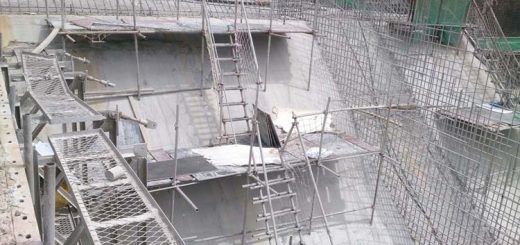Sea Sand for Construction[Reality and Truth]
The construction sector is looking into alternative materials such as sea sand due to the decaying in other resources today. If they cleaned properly, the use of sea sand for construction could be one of the best alternatives.
Initially, river sand was used as the fine aggregates in the construction. Later, the use of the manufactured sand also became popular due to its advantages.
Increasing demand for construction materials has made a deficiency in the construction material supply. Further, it can be observed that some of the projects getting delayed due to the lack of materials at the site on time. In addition, a consistent supply of materials is becoming a more difficult task today.
The growing environmental concerns on getting river sand from river beds have limited the extraction. In addition to the impact on the environment, excavation of the rivers have caused failures of bridges, retaining structures, soil erosion, collapsing rivers, etc.
In this background, as a reasonable solution to the issue, the use sea sand for construction is encouraged. There are more advantages that can be achieved with the use of sea sand.
Advantages of Sea Sand
- Sea sand particles are rounded or cubical, same as river sand.
- Grading of the sea sand is finer than the river sand.
- It does not contain silt or organic materials.
- Readily available though they need to be cleaned.
- Material grading and its consistency are added benefits.
- Mining can be done at a reasonable cost.
- Countries having sea around can use this natural resource widely.
Disadvantages of Sea Sand
- Corrosion of reinforcements
- Cost and time for washing the sea sand
- Production may require larger capital investment
- Contained seashell
- Higher chloride content
Can We Use Sea Sand for Construction
Mostly asked questing is ” can we use sea sand for construction”.
The answer is Yes, It is possible.
The main issue of the sea sand is the containment of the seashell and chlorides.
Impact of seashell content and other impurities
Offshore sand contains seashells largely. According to BS 882 1992, there is no requirement for shell content for aggregates smaller than 5mm. Refer to the following table taken from BS 882 1992.
Although some argue that the content of the shells has an impact on the compressive strength, according to the BS 882 1992, when aggregate finer than 5mm, there is no limit specified. As per some of the findings of the studies, it has proven that there is no impact on the compressive strength of concrete for aggregates finer than 5mm.
Further, it should be understood that the size of the shells is also limited to 5mm when the size of the aggregates is limited to 5mm.
However, it is known that the containment of shells impacts the workability of concrete.
Limits on Chloride Content
Chloride attack is one of the factors affecting durability of concrete. Sea sand contains chloride ions beyond the acceptable limit causes sever durability issues. Therefore, much attention is required when offshore sand is used in construction.
The chloride content in the concrete is limited to 0.4% by mass of cement generally. BS 5328 Part 1 1997 specify this limit and BS 882 1992 have bit higher values(0.5%). The following table was extracted from BS 5328 Part 1 1997.
The studies carried out by researches have proven that the content of the chlorides should be limited to 0.3%. Apart from that if we concern about the durability of concrete, we shall limit the chloride content as much as possible.
How to Clean offshore Sand
The most widely used method is to store the sea sand in the land and letting it clean by naturally. The content of the impurities is checked continuously from the starting of the fill until it is being used.
Mainly the rains washout the materials in the sand and becomes clean.





